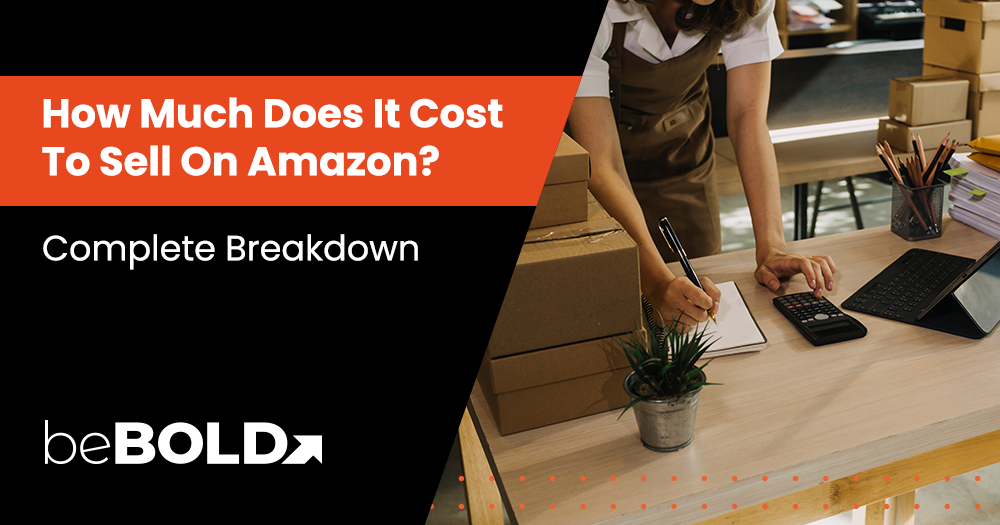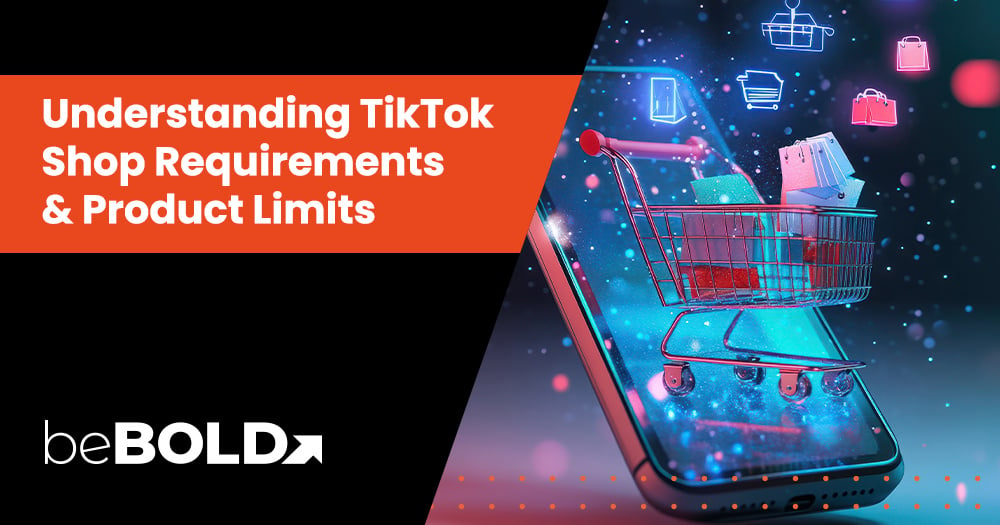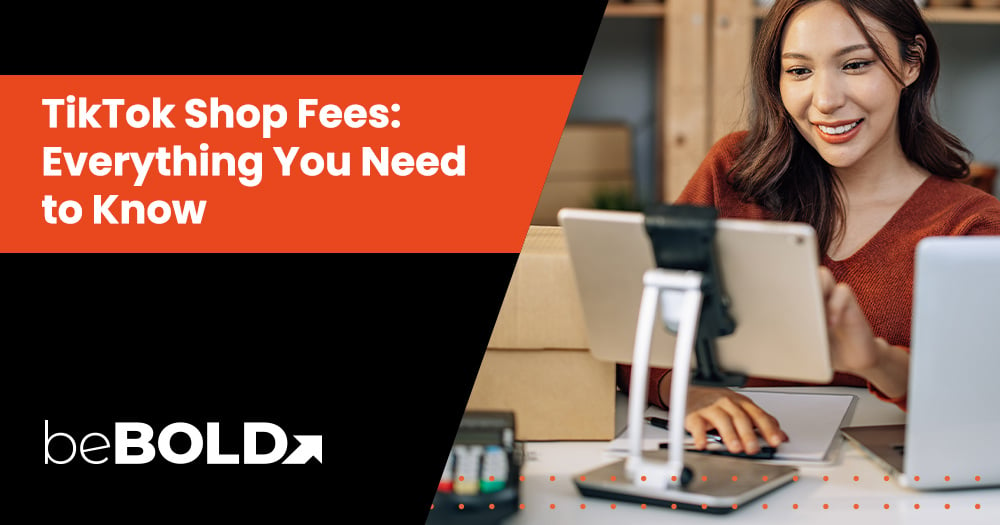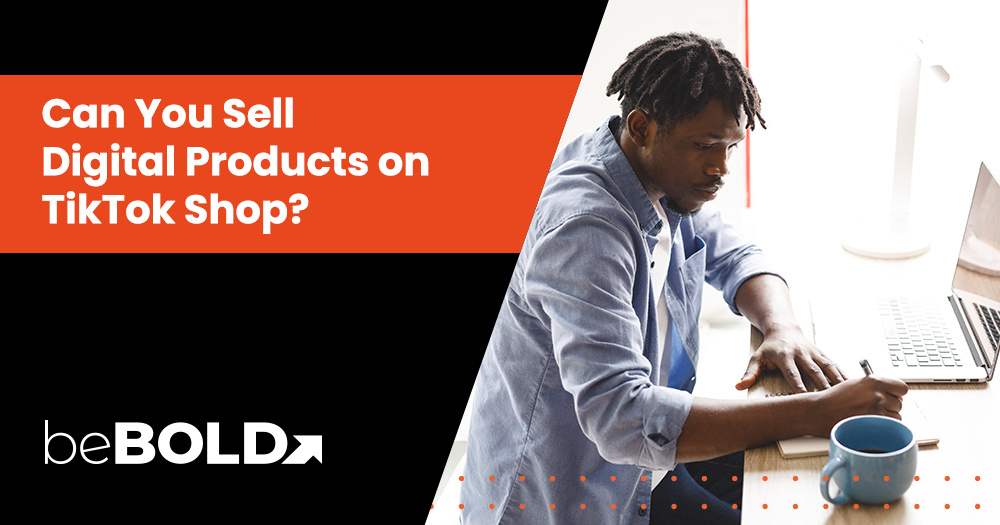Selling on Amazon has become a go-to strategy for businesses of all sizes looking to reach millions of potential customers worldwide. But with such a powerful platform comes a web of fees that can make or break your profit margins. From referral fees and selling plans to order fulfillment and advertising costs, understanding the full scope of expenses is crucial for success. So, how much does it really cost to sell on Amazon? In this ultimate breakdown, we’ll reveal the true cost of selling on the platform, helping you navigate the complexities and maximize your bottom line. Whether you're a new seller or an established brand, this guide has everything you need to know before you hit "list."
How much does it cost to sell on Amazon?
Even though Amazon offers vast opportunities to budding entrepreneurs, it also has various costs. Understanding these fees is crucial for determining your profit margins and overall strategy. Here are the different costs associated with selling on Amazon -
1. Referral fees
Referral fees are a percentage of each sale made through Amazon. These fees vary depending on the product category and typically range from a minimum referral fee of 6% to a maximum fee of 45%, with most categories charging around 15%. For instance, if you sell a product for $100 in a category with a 15% referral fee, Amazon will take $15 as a referral fee.
Here’s a table of Amazon referral fees for various categories based on information from the Amazon Seller Central website. Referral fees are charged as a percentage of the item’s total sale price, including shipping rates and any gift-wrapping charges.
|
Category |
Referral Fee Percentage |
Additional Details |
|
Amazon device accessories |
45% |
Highest referral fee category |
|
Appliances |
15% |
|
|
Automotive & powersports |
12% |
8% for items above $1,000 |
|
Baby products |
8% |
15% for items over $10 |
|
Beauty |
8% |
15% for items over $10 |
|
Books |
15% |
|
|
Camera & photo |
8% |
15% for items over $1,000 |
|
Clothing and accessories |
17% |
|
|
Consumer electronics |
8% |
15% for items over $100 |
|
Electronics accessories |
15% |
8% for items above $100 |
|
Furniture & decor |
15% |
10% for items over $200 |
|
Grocery & gourmet food |
8% |
15% for items over $15 |
|
Health & personal care |
8% |
15% for items over $10 |
|
Home and kitchen |
15% |
|
|
Jewelry |
20% |
5% for the portion above $250 |
|
Luggage & travel accessories |
15% |
|
|
Shoes, handbags & sunglasses |
15% |
|
|
Music |
15% |
|
|
Outdoors & tools |
15% |
|
|
Personal computers |
8% |
|
|
Sports |
15% |
|
|
Toys & games |
15% |
|
|
Watches |
16% |
3% for portion above $1,500 |
|
Wine |
10% |
2. Closing fees
In addition to referral fees, Amazon may charge a variable closing fee on certain items, particularly media products like books, DVDs, and music. The standard closing fee is typically $1.80 per item sold, which can significantly impact sellers who focus on low-margin products.
3. Selling plans

When it comes to selling on the platform, understanding the different selling plans available is essential for optimizing your approach. Each plan is designed to cater to specific seller needs and selling volumes, allowing you to choose one that aligns with your business model and goals.
- Individual Seller Plan: The Individual Seller Plan is designed for those who sell fewer than 40 items per month. It costs $0.99 per item sold, in addition to referral and closing fees. This plan is ideal for casual sellers who don’t need advanced tools and services.
- Professional Seller Plan: The Professional Seller Plan is meant for higher-volume sellers, charging a flat $39.99 per month, regardless of how many items you sell. This professional selling plan gives access to advanced features, such as bulk listing, advertising tools, and eligibility for top placements like the Buy Box.
4. Selling services fees
In addition to the above, there are certain selling service fees that are levied based on the kind of services you avail as a seller from Amazon-
- Pre-packaged: If you choose to use Amazon’s pre-packaged selling services, which help simplify the process of listing and fulfilling orders, you may incur fees for things like barcoding, labeling, or packaging customization. These fees are usually one-time costs incurred at the start of listing or fulfillment preparation.
- Recurring: Some of Amazon’s selling services require monthly or annual subscriptions, such as advanced seller tools or premium account features. These recurring fees can add up, especially for larger sellers requiring sophisticated solutions.
5. Amazon fulfillment and shipping fees

Amazon Fulfillment and Shipping Fees are essential considerations for sellers utilizing Fulfillment by Amazon (FBA), a service that allows sellers to store their products in Amazon's warehouses. Here’s a breakdown of the key components of these fees:
- Amazon FBM fees: With Fulfilled by Merchant (FBM), sellers manage their own shipping. While there are no direct fees to Amazon for fulfillment, sellers must account for the costs of packaging, shipping, and handling. Choosing to fulfill orders yourself can offer more control but often requires more effort and higher shipping costs.
- Amazon SFP fees: The Seller Fulfilled Prime (SFP) option allows sellers to ship directly to Prime customers while still providing Prime shipping benefits. While the cost to participate varies, sellers must meet strict shipping requirements, which may involve higher fulfillment expenses to ensure Prime-level service.
- Amazon FBA fees: Fulfillment by Amazon (FBA) is a popular option, where Amazon handles the entire fulfillment process. FBA fees include charges for storage, packaging, shipping, and customer service. These fees vary based on the size and weight of your products, as well as the volume of sales.
- FBA storage fees: Amazon charges monthly storage fees based on the cubic feet of space your products occupy in its fulfillment centers. Storage fees increase during peak seasons like Q4 (October-December). Currently, the fees range from $0.75 to $2.40 per cubic foot.
- FBA fulfillment & shipping fees: In addition to storage, Amazon charges fulfillment fees for picking, packing, and shipping your orders. These fees are based on product size and weight and typically range from $2.50 to $10.00 per unit for standard-size items.
- Miscellaneous FBA fees: Amazon may charge additional FBA fees for services like returns processing, unplanned service fees (e.g., incorrect labeling), and long-term storage fees for inventory that remains in warehouses for more than 365 days.
6. Optional and additional Amazon selling fees
When selling on Amazon, the basic selling fees, like referral fees and fulfillment costs, are only part of the story. To fully leverage Amazon’s marketplace, sellers often encounter optional and additional fees that can impact their overall costs. These fees are not mandatory but may be necessary depending on your selling strategy, how you manage inventory, or the need for additional services.
- Amazon advertising fees: One of the most common optional expenses is Amazon’s advertising service, known as Amazon Advertising (formerly Amazon Marketing Services). Using Amazon Advertising can significantly boost product visibility, but sellers should account for these costs when calculating their profit margins. These fees apply if you choose to promote your products through various Amazon ads like Sponsored Products, Sponsored Brands, or Sponsored Display Ads:
- Cost-per-click (CPC): Amazon charges advertisers based on clicks. This means you only pay when a customer clicks on your ad.
- Flexible budgets: You can set daily or campaign-based budgets, making advertising costs flexible depending on your business needs.
- Bid-based system: Higher bids increase the likelihood of your product appearing in top search positions.
- Premium Account Services: For sellers who want to level up their Amazon experience, Premium Account Services offers tailored support and enhanced tools. Premium services often come with a subscription fee, and while not required, they can save time and offer deeper insights into your performance on the platform. These services include:
- Amazon Marketplace Web Service (MWS): Allows sellers to automate order management, inventory updates, and pricing, handy for large sellers handling massive inventories.
- Amazon selling coach: Provides personalized selling recommendations based on inventory levels, pricing, and potential sales opportunities. This service can guide sellers to make data-driven decisions for better business outcomes.
- Other potential fees: In addition to advertising and premium services, sellers may encounter the following optional fees:
- Inventory placement service fees: If you're using Amazon’s FBA (Fulfillment by Amazon) service and want to ship inventory to a specific fulfillment center, Amazon charges a fee for this service.
- Removal and disposal fees: When using FBA, if you need to remove unsold inventory from Amazon’s warehouses, you’ll incur removal fees. If items need to be disposed of, there’s a separate disposal fee.
- Long-term storage fees: FBA also charges additional fees for items stored in their warehouses for over 365 days. If your products aren’t moving quickly, these fees can add up.
- High-volume listing fees: For sellers with over 100,000 active product listings, Amazon may charge high-volume listing fees to cover the additional load on their systems.
- Refund administration fees: If you refund a customer after a sale, Amazon will retain 20% of the referral fee, up to a maximum of $5, as an administrative fee.
How to calculate the net margins after considering all the fees?
Let us consider an example of a Bluetooth speaker selling on Amazon for a selling price of $50.00
Fee breakdown
- Referral fees:
- Category: Consumer electronics (typically has a referral fee of 15%).
- Calculation:
- Referral fee = $50.00 x 15% = $7.50
- Closing fees:
- Note: Closing fees generally apply to media items, so in this case, there are no closing fees for the Bluetooth speaker.
- Selling plan fees:
- The plan chosen: Professional Seller Plan.
- Monthly fee: $39.99.
- Daily pro-rated cost (assuming 30 days in a month):
- Monthly fee / 30 = $39.99 / 30 = $1.33 per day.
- Cost for 1 sale (for simplicity, assuming she makes one sale):
- $1.33
- Fulfillment by Amazon (FBA) fees:
- Weight: 1.5 lbs (the item qualifies for FBA).
- FBA fulfillment fee:
- For items weighing between 1 lb and 2 lb, the fee is approximately $3.00.
- FBA storage fee:
- Assuming it’s in the warehouse for a month, the storage fee is $0.50 per cubic foot, and the seller’s speaker occupies 1 cubic foot:
- Monthly Storage Fee = $0.50.
- Total FBA fees:
- Fulfillment Fee + Storage Fee = $3.00 + $0.50 = $3.50.
- Advertising fees:
- The seller decided to run a Sponsored Products campaign to promote her Bluetooth speaker.
- Cost of ads: Let’s assume she spends $5.00 for the campaign related to this sale.
- Other potential fees:
- Assume the seller uses Amazon’s Inventory Placement Service to streamline shipping. The fee for this service is $0.25 per item.
- No refund fees are applicable as the item sold successfully without returns.
Total fee calculation
Now let’s summarize the total fees associated with this sale:
|
Fee Type |
Cost ($) |
|
Referral fee |
$7.50 |
|
Selling plan fee (Pro-rata) |
$1.33 |
|
FBA fulfillment fee |
$3.00 |
|
FBA storage fee |
$0.50 |
|
Advertising fees |
$5.00 |
|
Inventory placement fee |
$0.25 |
|
Total gees |
$17.58 |
Profit calculation
Now, let's calculate the profit from this sale:
- Total revenue from sale: $50.00
- Total fees: $17.58
- Net revenue:
- $50.00 - $17.58 = $32.42
How can you reduce the cost of selling on Amazon?
Selling on Amazon offers immense potential for reaching a global audience, but managing costs is crucial to maintaining profitability. Amazon’s various fees can add up, from referral fees to fulfillment costs, and these can eat into your margins. However, there are strategic ways to reduce these costs and maximize your earnings on the platform. Let’s explore a few effective options for your Amazon business.
Join the Brand Referral Bonus Program

Amazon’s Brand Referral Bonus Program is designed to reward sellers who drive external traffic to Amazon. This program gives sellers a bonus in the form of a referral fee credit when sales come from their own marketing efforts outside of Amazon. By joining, you can reduce the impact of referral fees on your total costs.
Here’s how it works:
- When you direct customers to your Amazon product listings from external sources (e.g., social media, blogs, email marketing), Amazon gives you a bonus credit.
- This bonus can be up to 10% of the total sales price and is credited back to your seller account, effectively lowering your overall referral fee costs.
By leveraging external marketing channels and taking advantage of this program, you can recoup a portion of the fees Amazon charges for selling on its marketplace.
Monitor and optimize your inventory levels
Inventory management is crucial when using Amazon’s FBA service. One of the hidden costs of selling on Amazon is the long-term storage fees and overstock charges for products that sit in Amazon’s warehouses too long. To avoid these, it's important to keep your inventory levels optimized.
Strategies to reduce inventory-related costs:
- Regularly review your inventory turnover: Make sure you’re not overstocking slow-moving items, as Amazon charges long-term storage fees for items that stay in their warehouses for over 365 days.
- Use inventory management tools: Take advantage of Amazon’s own inventory management tools or third-party solutions that help forecast demand and optimize restocking efforts.
- Run promotions to clear slow-moving stock: If an item isn’t selling as expected, consider running discounts or promotions to clear out inventory, minimizing the need to pay storage fees.
What not to spend your money on when dealing with Amazon fees and costs?
When managing your business on Amazon, it’s crucial to be mindful of fees and expenses. Here are some tips on what not to spend your money on to avoid unnecessary costs:
- Don’t choose Fulfilled by Amazon (FBA) if it doesn’t suit your business model. Consider whether you can fulfill orders more cost-effectively on your own. Analyze your sales volume and product type to determine if FBA is necessary.
- Be cautious with Sponsored Products and other advertising options. Focus on well-researched keywords and track your ROI. Avoid spending money on ads without a clear strategy or targeting ineffective keywords.
- Excess inventory can lead to long-term storage fees. Avoid overstocking and keep your inventory lean. Use Amazon’s inventory management tools to help predict demand and manage stock levels effectively.
- Consider whether you really need a Professional Selling Plan. If you are just starting and plan to sell fewer than 40 items per month, stick with the Individual Selling Plan to save on monthly fees.
- Evaluate any third-party tools or software subscriptions critically. If a tool isn’t providing significant value or isn’t being fully utilized, it might not be worth the cost.
- Manage your return policies and customer service to minimize product returns. Focus on providing accurate product descriptions and high-quality images to reduce customer dissatisfaction.
- If you’re selling your products directly, choose cost-effective shipping solutions. Compare various carriers and their rates to find the most economical shipping options.
- Conduct thorough market research before launching new products. Investing in items with low demand or high competition can lead to wasted resources.
- While branding is important, don’t overspend on packaging, logos, or marketing before validating your product’s market fit. Focus on getting sales first before investing heavily in branding.
- Be fully aware of all the fees associated with selling on Amazon, including referral fees, closing fees, and FBA fees. Accurately factor these into your pricing strategy to avoid losing money.
What are the risks of DIY vs Hiring an Amazon expert to manage costs?
Managing Amazon fees on your own can quickly become a costly challenge. Amazon’s fee structure is complex, with multiple charges including referral fees, fulfillment fees (for FBA), storage fees, and potential long-term storage fees if your inventory isn't moving fast enough. Without a clear understanding of how these fees are calculated, you may end up with unexpected charges that eat into your profits. For example, improperly forecasting demand can result in overstocking, leading to excessive storage fees, or understocking, which can cause missed sales opportunities.
Additionally, not optimizing your fulfillment strategy—whether choosing FBA or FBM—can lead to higher fulfillment costs or customer dissatisfaction, ultimately impacting your bottom line. DIY sellers may also overlook critical savings opportunities like shipping discounts, fee refunds for returns, or adjusting pricing strategies to offset referral fees.
An Amazon account management expert, however, is well-versed in navigating these fees. They can help you strategically manage your inventory to avoid unnecessary storage costs, optimize your fulfillment method, and adjust your pricing strategy to account for Amazon’s referral fees. By identifying hidden cost-saving opportunities, they ensure that you’re minimizing expenses and maximizing profitability. In the long run, their expertise in handling fees can protect your margins and prevent costly surprises.
How can BeBOLD Digital help you?
At beBOLD Digital, we specialize in helping Amazon sellers manage and reduce their costs through strategic insights and tailored solutions. Our team optimizes product listings to minimize referral fees and guides you in choosing the most cost-effective fulfillment options, whether through Fulfillment by Amazon (FBA) or alternative methods.
We also help you leverage cost-saving programs like the Brand Referral Bonus Program to qualify for referral fee credits. Additionally, our expertise in creating targeted advertising campaigns ensures you get the best return on your ad spend while we assist with data-driven inventory management to prevent long-term storage fees. With our support, you can focus on growing your business while we help you navigate the complexities of selling on Amazon.
Book a call to learn more about us.
Conclusion
Selling on Amazon opens doors to a massive global audience, but understanding the platform's fee structure is crucial to your success. From referral fees to fulfillment and optional costs like advertising, managing these expenses can make a significant difference to your bottom line. Whether you’re a new seller or an experienced one, knowing how to optimize your costs is key to maintaining profitability. For many sellers, working with an Amazon expert like beBold Digital can provide the guidance needed to navigate the complexities of the platform, ensuring you maximize returns while keeping expenses under control.
Frequently Asked Questions
What percentage does Amazon take from sellers?
Amazon typically takes a referral fee ranging from 8% to 15% of each sale, depending on the product category. In addition to referral fees, sellers using Fulfillment by Amazon (FBA) may also pay fulfillment and storage fees, which vary based on product size, weight, and time stored in Amazon's fulfillment centers.
Is there a fee to start selling on Amazon?
There is no direct fee to create an Amazon seller account, but depending on the selling plan you choose, you may face upfront costs. With the Individual Seller Plan, you pay a per-item fee of $0.99 for each sale, while the Professional Seller Plan has a flat monthly subscription fee of $39.99, which allows for unlimited sales without per-item fees.
Do you have to pay 40 dollars to sell on Amazon?
You only need to pay the $39.99 fee if you choose the Professional Seller Plan. This plan is recommended for sellers who expect to sell more than 40 items per month. If you’re selling fewer than that, you can opt for the Individual Seller Plan, where you don’t pay a monthly fee but are charged $0.99 per sale.
How much does Amazon take per sale?
The amount Amazon takes per sale depends on several factors, including the product category, selling plan, and whether you use Amazon’s fulfillment services. For most categories, Amazon charges a referral fee of 8% to 15% of the item price. If you’re using FBA, additional fulfillment and storage fees apply based on the size, weight, and storage duration of your products.








Comments